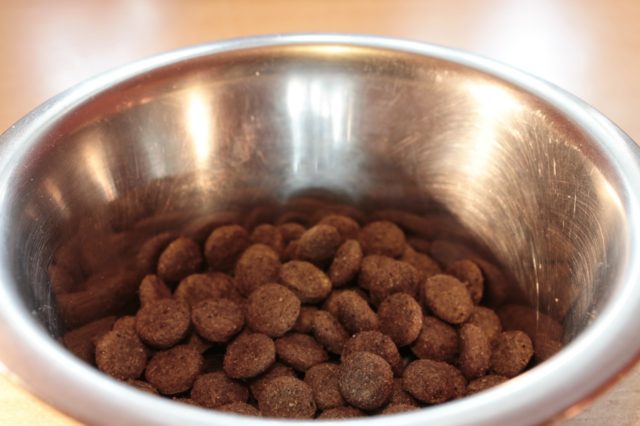
If you follow a feeding schedule of even one full bowl of food for your dog each day, your dog, in all probability, is not hungry. At least in terms of the dictionary definition of this word. In fact, in any domestic setting that is both loving and comfortable, chances of an outrightly hungry dog is rather rate. Experts even claim that healthy dogs with access to sufficient amount of fresh water can last up to five days sans food, without suffering serious health consequences.
This goes without saying that it is never recommended to subject your dog, even if they are a little overweight, on starvation mode. If there is one thing to take away from these pronouncements, it has to be this: you are probably feeding your dog more than what they did on a daily basis. Hence any concern you might have about your dog being hungry is most likely misplaced. Instead you can redirect this concern on another crucial consideration; how much should you feed your dog?
Here is a basic guideline:
Three small portions/day for puppies.
Two small portions/day for small adult canine.
Two small portions/day for adult canine (medium to large).
One hearty portion/day for adult canine (large to giant).
One to two small portions/day for senior dogs.
Of course you must consider these rules with a grain of salt. Fact is there is no universal calculator for dog feeding, and much of it rely on your dog’s activity level and general health.
Dog Hunger is Influenced by Environmental Factors
Much is already known about how activity level and health directly affect canine diet. Conversely, when it comes to weather as a determining factor on how much you ought to feed your pet, we can use more enlightenment. For instance, a dog owner from North Carolina has recounted how their dog eats less during hot months of summer. This is because during this period their pet is prone to stay in one cool spot, with little to no physical activity. Having no exercise means the dog requires less energy, and hence less food. On the other hand, come cooler months when a dog enjoys the height of playtime, their need for food shoots up. Some dogs during wintertime also require more food to give them the energy they need to keep their bodies warm.
The key is to observe how your dog responds to specific weather conditions and start from there. After all, your dog can be an outlier and totally debunk these aforementioned observations with their own proclivities.
Consulting with the Pros is Crucial
Sometimes a dog’s need for nutrition changes many times in a course of one year. Lest you waste dog food unnecessarily, consult with your veterinarian so as you can be guided on what dietary schedule to follow. Remember that feeding guidelines included in dog food packaging are just recommendations. Between that and your expert veterinarian, the latter is more in the know.
But rest assured, your pet is not hungry.








